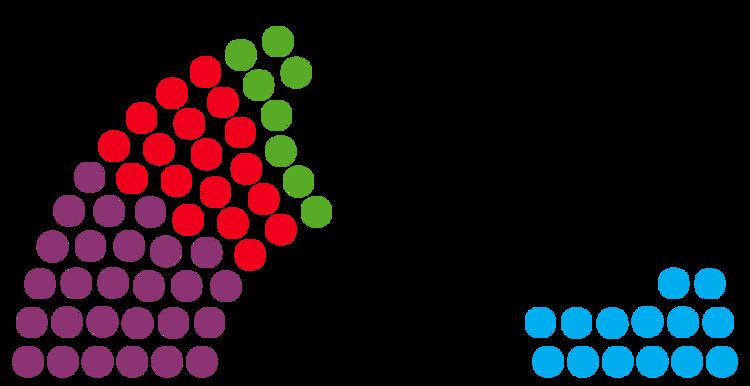Type Landtag Last election 31 August 2014 | Seats 126 | |
 | ||
President Matthias Rößler, CDU
Since 29 September 2009 Political groups Government (77)
CDU (59)
SPD (18)
Opposition Parties
The Left (27)
AfD (14)
Greens (8) | ||
The Landtag of the Free State of Saxony, also referred to as the Saxon Landtag, the Parliament of Saxony or the Saxon Parliament, is the legislative body of the German State of Saxony. It is based on the Free State's constitution, drafted in 1992.
Contents
History
Some form of an assembly has existed in the state's predecessors since the Saxon House of Wettin was enfeoffed with the Margraviate of Meissen in 1089. The local ministeriales regularly met with the Wettin margraves, consulting but also defending the interests of the region they were from. By the time when Meissen was elevated to the Electorate of Saxony according to the Golden Bull of 1356, the noble representatives of the estates formed a constant advisory board. With the deputies of the Saxon cities, these Landstände councils gradually obtained considerable voice opportunities until the 15th century, mainly in fiscal and military policies, later also in religious matters concerning the Protestant Reformation.
Kingdom of Saxony
A modern-style bicameral constitutionally-based legislature of the Kingdom of Saxony was introduced in 1831. In the wake of the tumultuous 1848 revolutions, Saxony's Landtag extended voting rights (though still maintaining property requirements) and abolished voting-taxes. In 1871, Saxony was incorporated into the German Empire and more voting rights were gradually extended.
By the early 1900s, Saxony's local politics remained stable with the Social-Democrats, Conservatives, and National-Liberals were splitting the share of votes and Landtag seats three ways. (In 1909: Social-Democrats won 27% of seats, Conservatives won 31% of seats, "National-Liberals" won 31% of seats). Voter participation was high (82% in 1909).
Free State
The post-World War I era saw local politics in Saxony mirror the tumultuousness befalling all of European politics at the time. The Saxon Landtag election of 1930 saw the Social-Democrats winning 33% of seats, the National-Socialists 15%, the Communists 14%, a free-market-liberal party (Reichspartei des deutschen Mittelstandes) 10%, "National-liberals" (Deutschnationale Volkspartei) 8%, and a number of mostly local and right-wing populist parties winning the remaining 16%. Turnout was unenthusiastic, at 73%.
The Landtag elections of 5 March 1933 saw unprecedented turnout of 92%. The National-Socialists won 45%, the Social-Democrats 26%, the Communists 16%, National-liberals (Deutschnationale Volkspartei) 7%, and minor parties taking only 6% of seats. This was the final free election in Saxony until 1990.
Since 1990, the CDU has been in government in the Saxon Landtag and has usually won most of the votes. This changed in 2004.
Current Composition
The results of the 2014 Landtag elections were as follows:
Elections are conducted using a proportional representation system, with a minimum of 5% vote share to receive any seats.
